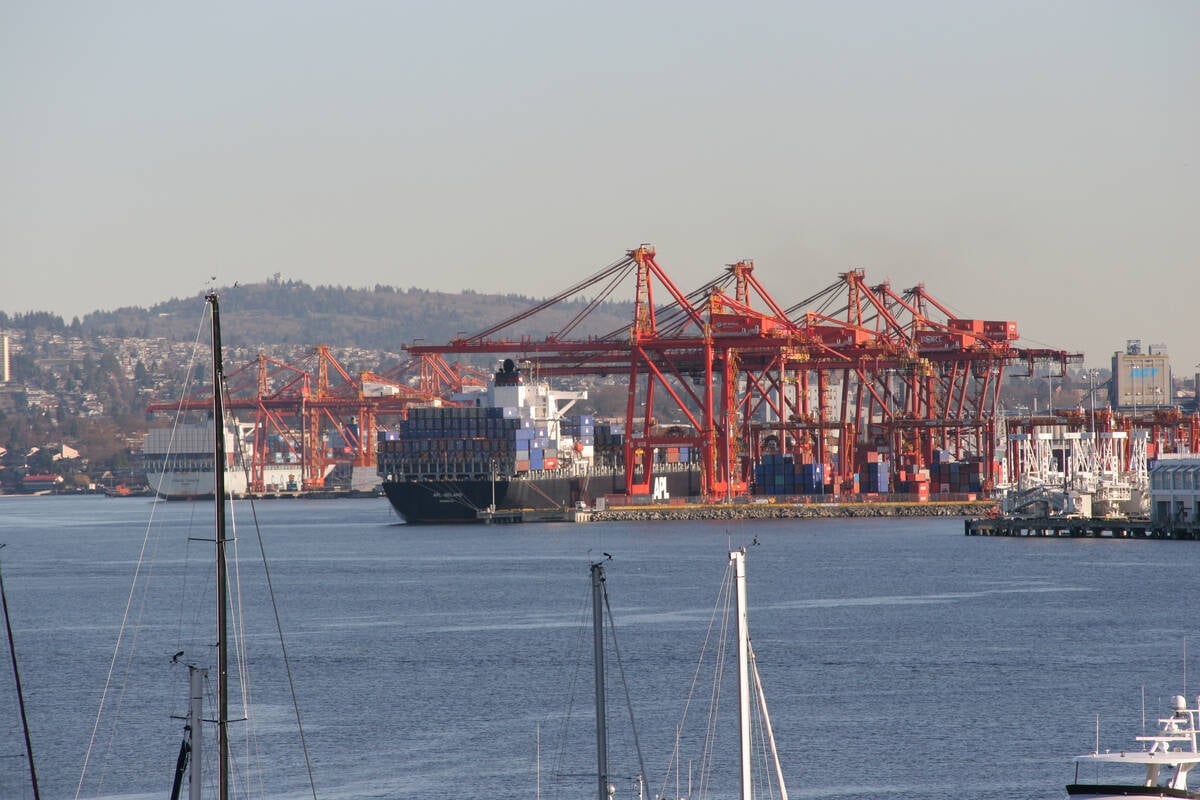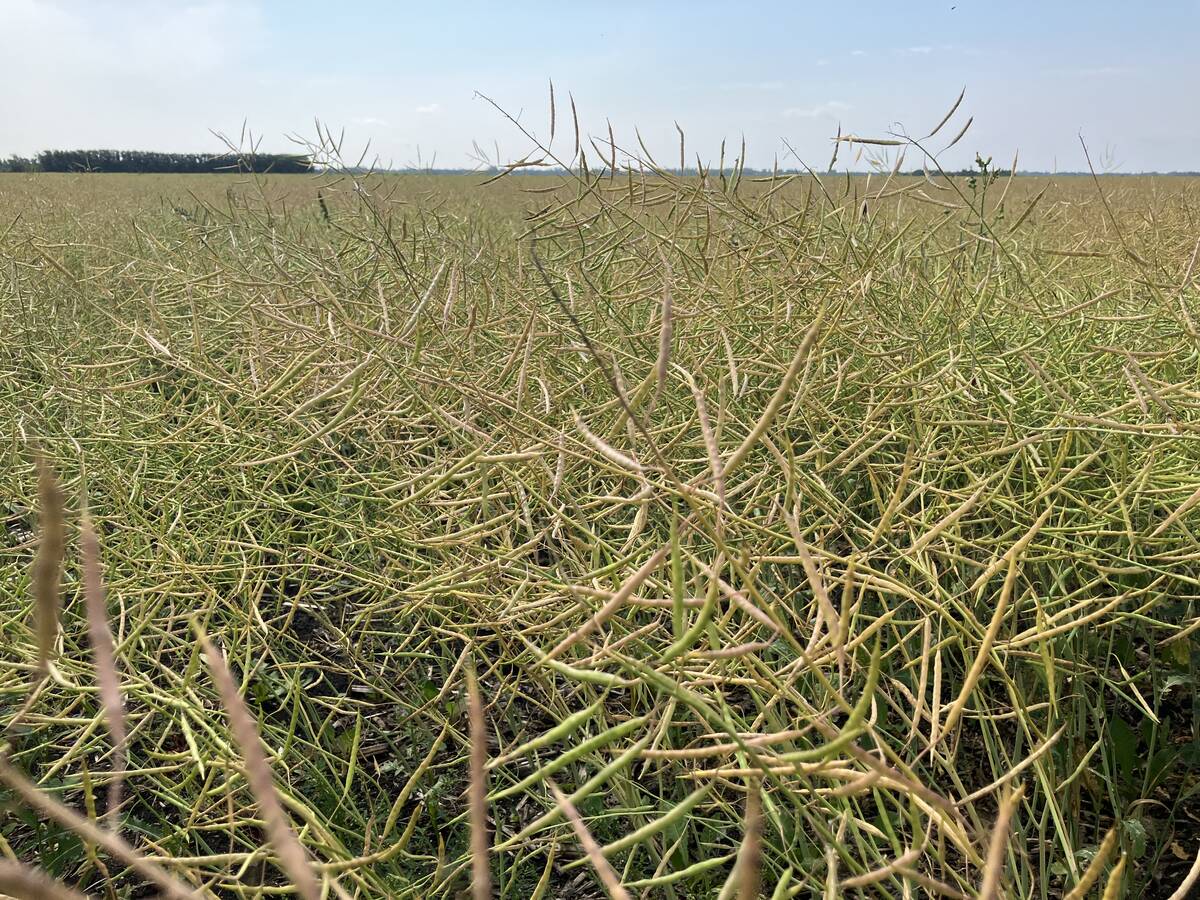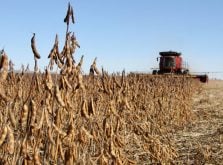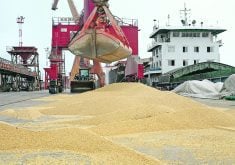In normal times, when the price of soybeans is a strong influence on canola’s price, we closely watch the seeding of South American soy crops and the weather this time of the year to see if their production prospects will lift or drag on oilseed prices.
It is still worthwhile to follow South America’s soybean campaigns, and more on that later, but the link between the two oilseeds this year is weak as Canada’s canola struggles in the face of China’s trade-stopping tariff.
China also had tariffs on American soybeans that blocked trade since May, but at the end of October, U.S. president Donald Trump and Chinese president Xi Jinping agreed to a truce in their trade war.
Read Also

U.S. legislation could boost maritime biofuel use
The U.S. appears poised to pass a bipartisan bill that would allow maritime biofuel to collect RINs.
That included resumption of soybean trade, and the U.S. says China committed to buy 12 million tonnes this year and then 25 million tonnes in each of the following three years.
Immediately after the announcement, soybean futures prices rose. Soy meal futures had also been rising for reasons of their own.
But as I noted earlier, the link between soybean and canola prices is currently broken, and the rise in soybean futures did not lift canola futures.
Interestingly, however, soy oil also was unaffected, and soy oil tends to have more impact on canola prices than soybean seed.
Indeed, soy oil has generally been drifting lower since the start of the U.S. harvest. Contributing to the weakness is uncertainty in U.S. biofuel policy and weakness in crude oil markets.
Also, the rally in soybeans faded after a few days as no actual U.S. sales to China were registered, but several new shiploads of Brazilian soybeans were put on the books.
Looking out longer term, China’s commitment to buy 25 million tonnes per year of U.S. soybeans is about the amount it bought from the U.S. in recent years.
However, America’s share of China’s soybean market has fallen, losing out as Brazil captured all the growth of China’s imports.
In 2012, when China imported about 60 million tonnes of soybeans, America and Brazil each had a little more than 40 per cent of the market.
Now, China imports close to 112 million tonnes of soybeans and America has slightly more than 20 per cent of the market while Brazil has more than 70 per cent.
In recent months, China also turned to Argentina, buying as much as seven million tonnes of soybeans.
China does not want to be beholden to its chief global economic rival, particularly when the United States has twice elected a president willing to start trade wars. Also, Brazil had land that it was able to develop for farming and vastly increase its output.
Brazil’s soybean acreage has increased to a new record every year for at least two decades.
This year is no different. In the current campaign, it is expected to climb to 121.2 million acres, a 3.5 percent increase over last year.
Brazil’s government forecaster Conab pegged expected production at 177.6 million tonnes.
The Brazilian Association of Vegetable Oil Industries (Abiove) is a little more optimistic with a forecast of 178.5 million tonnes, which would be almost four per cent more than last year.
Soy planting this season through October was behind last year’s pace, largely because dry conditions in the central region had farmers waiting for moisture to help with germination.
The southern part of the country has good moisture, as does Argentina.
Weather models suggest that the situation would flip this month with more moisture in central regions and less in the south.
The U.S. National Weather Service’s Climate Prediction Center last month said a weak La Nina had developed in the equatorial Pacific, which could last into early 2026 and then transition to neutral.
If this proves true, it tends to deliver less rain to Argentina and southern Brazil and more moisture to central and northern Brazil.
But other forecasters, including Japan’s and Australia’s, say their models show conditions barely meeting the La Nina threshold.
All this suggests that there is less likelihood of a strong weather threat to South American soy production this year.
South American production will, as usual, affect the global oilseed market, but Canadian canola is on the outside looking in until it can get China back or find alternative buyers.
With Australia expected to capture most Chinese canola imports this year, quoted prices at ports Down Under are much higher than prices at Vancouver, and so that might mean Canada could pick up market share with other traditional buyers such as Japan, Europe, Mexico, the United Arab Emirates, Pakistan and Bangladesh.
Canada and Pakistan have worked out issues regarding imports of genetically modified crops and agreed to facilitate canola trade.
To contact D’Arce McMillan, email newsroom@producer.com.















